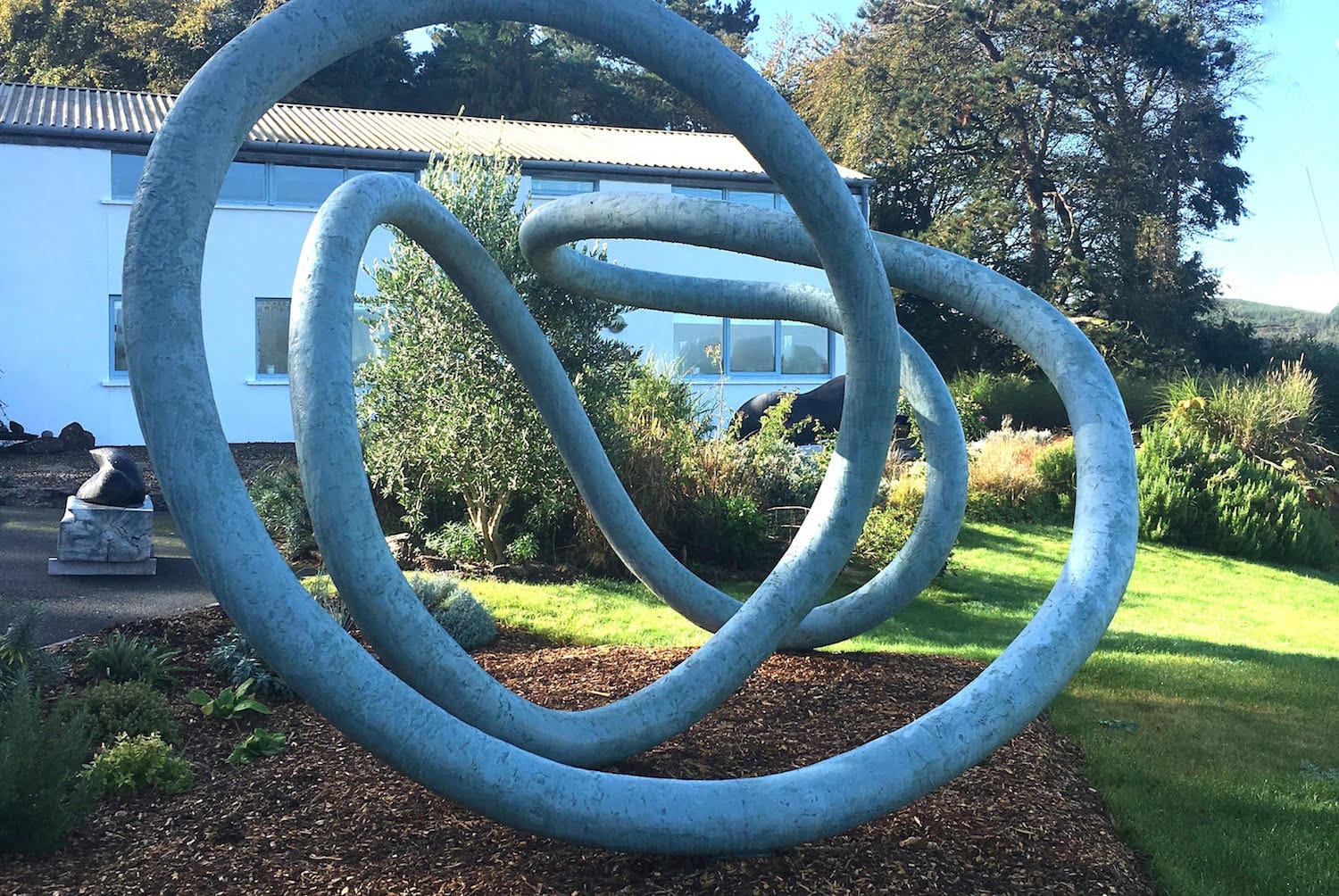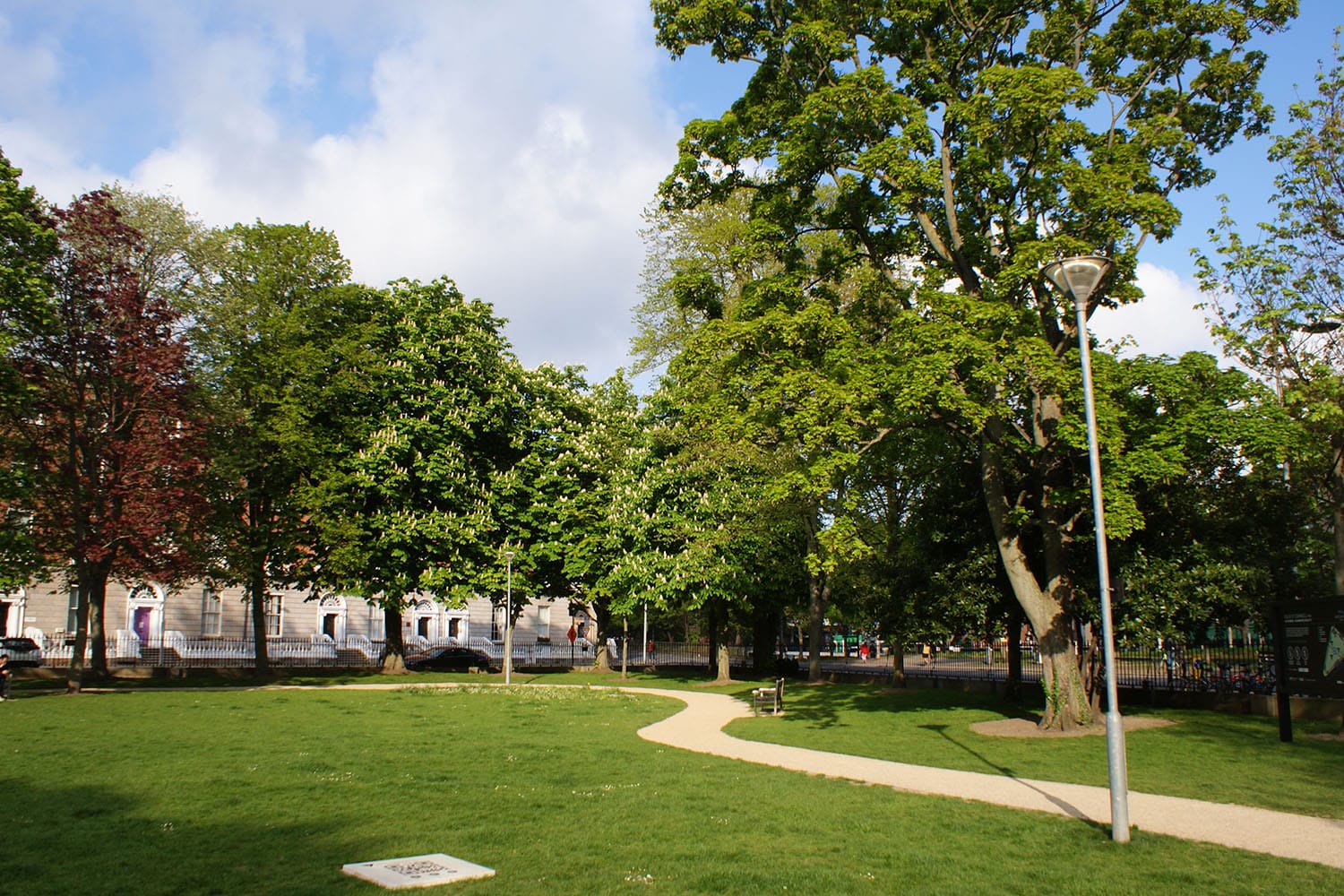What’s the best way to tell area residents about plans for a new asylum shelter nearby?
The government should tell communities directly about plans for new asylum shelters, some activists and politicians say.
Most of the sculptures by Eilis O’Connell were inspired by the works of designer Eileen Gray. Once shown in France, now sat in Cork, they’re visitable – virtually – in Dublin.

When artist Eilis O’Connell was first approached about displaying her sculptures virtually she was fairly sceptical.
Would anyone want to go to a park and look at images of sculptures through their phone, she wondered. Why not bring the real thing to the place?
But it would be expensive to uproot six large sculptures from the field behind her house near Ballincollig in County Cork and transport them to Wilton Park in Dublin 2 for an exhibition, she says.
Instead the director of the Royal Hibernian Academy (RHA), Patrick Murphy, suggested they do a virtual display, known as augmented reality.
Everyone else seemed to think the project was a great idea, O’Connell says. “They were going, ‘This is really radical, this is groundbreaking.’”
O’Connell wasn’t convinced: “I’m not really that interested in my phone.”
But she went along with the idea anyway.
At the February launch of the exhibition, entitled Six Works – Augmented Reality, she was surprised when audience members started to climb – sort of – into the sculptures, virtually, she says. “It was unbelievable. It was like they were kids again.”
There are six sculptures on display in Wilton Park, O’Connell designed most of them for an event to honour the minimalist designer Eileen Gray.
Gray was famous in the 1920s. Her furniture has sold for millions at auction.
In 1929, Gray built a house overlooking the sea on the French Riviera with full-length windows that open inwards, says O’Connell. “She was so ahead of her time, she was incredible.”
The house was regarded as an “architectural gem”, she says but was derelict until a national conservation body in France embarked on a restoration project.
Once the works were done, they invited O’Connell to design sculptures to put in the garden for the launch, she says.
There is no road up to the house though, so some of her sculptures “had to be helicoptered into the garden”, says O’Connell.
O’Connell’s stainless steel sculptures are a nod to Gray’s own works, particularly her room-divider screens, for which she was well-known in Paris.
Some are like giant silver screens. Another is a basket shape, like an upside-down net.
One other sculpture – not part of the Gray collection – is also featured virtually at Wilton Park. It’s a gigantic piece called “Circuit” from 2008, an enormous curved tube folded in an abstract squiggly design.

Wilton Park, also known as Wilton Square, is an historic park beside the Grand Canal. It stretches from Baggot Street Bridge towards Leeson Street Bridge.
An example of 19th century landscaping nestled in a Georgian neighbourhood, the park is owned by the property fund IPUT, whose push to redevelop it as part of a wider scheme was nono-ed by some councillors and later rejected by An Bord Pleanála.
Inside the park, a large sign details instructions on how to download an app to view the exhibition.
Large tiles on the ground display QR codes. When a visitor points their phone at the QR codes, the image of the sculptures should appear.
But still for most people, sitting in the park they won’t be able to see the statues, so is the exhibition really there?
“I know there isn’t anything there,” says Murphy, the RHA director who curated the exhibition and came up with the idea.
IPUT, who funded the project, had suggested putting in some temporary sculptures, he says.

Murphy knew augmented reality had been used in parks elsewhere including Central Park in New York, he says.
LinkedIn and Amazon both have bases locally and some of their workers lunch in the park, says Murphy. “We felt like this would be something that they might get excited about.”
Murphy approached the digital experience company, Noho, to create the virtual 3D images, he says.
It is a big job, says O’Connell. The guys from Noho visited her ramshackle field in Cork. They took thousands of photos of the sculptures on a large camera, she says.
Those photos were then knitted together to create virtual sculptures.
“They do fantastic work for museums, where they can look at a ruin and rebuild it in virtual reality,” says O’Connell.
Despite her initial scepticism, O’Connell is delighted that her sculptures are on display in central Dublin without the hassle and expense of digging them up and carting them to the city, she says.
Noho did a fantastic job, she says. But she isn’t fully convinced about the medium. “It is a digital experience but the real pieces look so much more amazing,” says O’Connell.
Some of the digital images appear to her as if they “are floating in space”, she says.
Says Murphy: “I think it is kind of generational. This puzzled my mind years ago when Pokémon [Go] came out.”
The Wilton Park exhibition uses the same technology as Pokémon Go – and that phenomenon shows us that many young people react to the world through their phones, says Murphy.
Ultimately, he hopes that the exhibition will stimulate interest in O’Connell’s work and “drive some younger audiences to look at art in the real sense, rather than the virtual sense”, he says.
The augmented reality exhibition is set to run until October. It’s outside, so viewing is compatible with rules around social distancing, says Murphy.
Get our latest headlines in one of them, and recommendations for things to do in Dublin in the other.